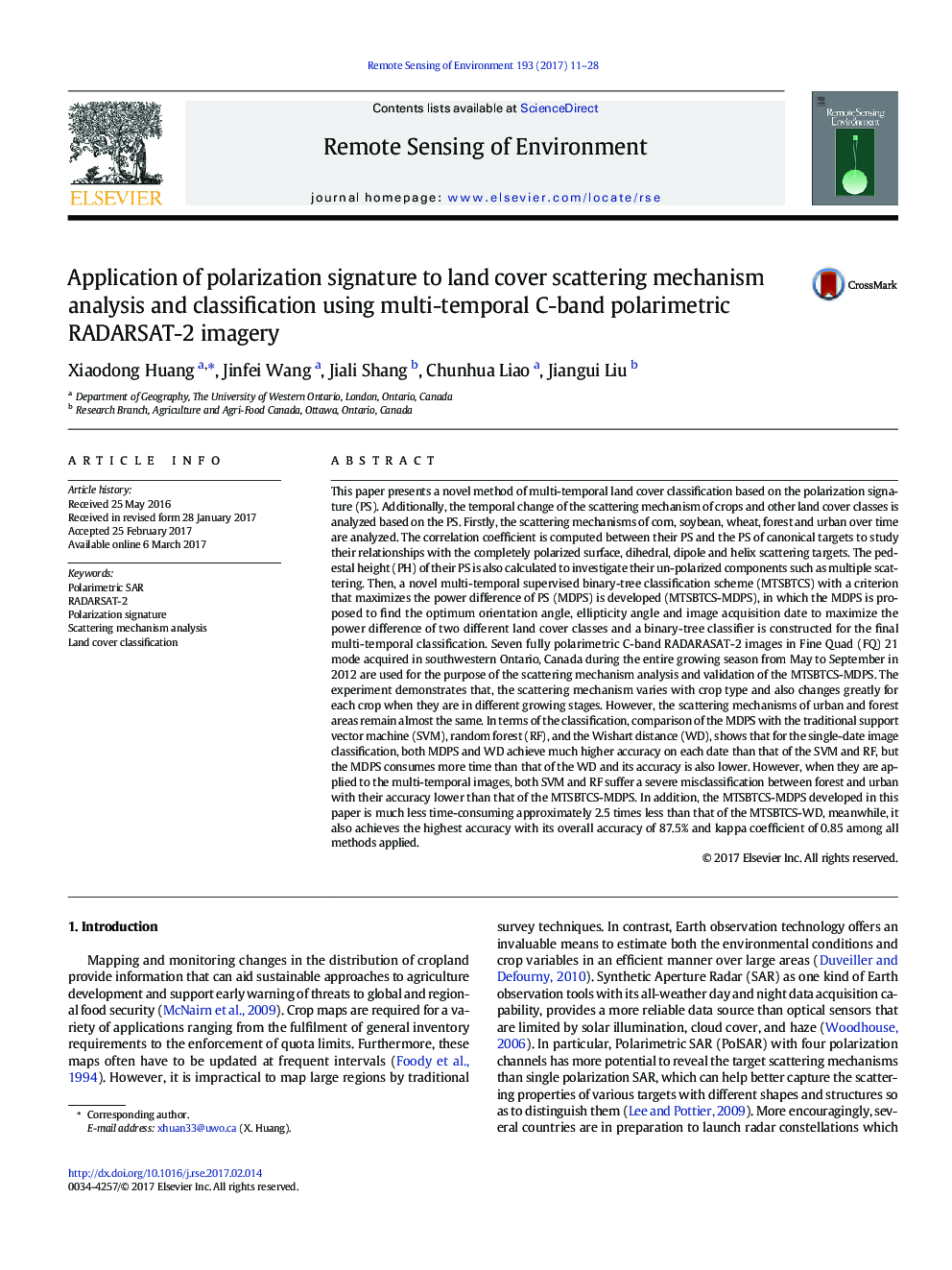| کد مقاله | کد نشریه | سال انتشار | مقاله انگلیسی | نسخه تمام متن |
|---|---|---|---|---|
| 5754694 | 1621207 | 2017 | 18 صفحه PDF | دانلود رایگان |

- Polarization signature is used for land cover scattering analysis over entire growing season.
- VV polarization power is greater than HH for bare soils which reverses for vegetation.
- A novel multi-temporal supervised binary-tree classification scheme is proposed.
- Proposed approach achieves higher accuracy and less execution time than other methods.
This paper presents a novel method of multi-temporal land cover classification based on the polarization signature (PS). Additionally, the temporal change of the scattering mechanism of crops and other land cover classes is analyzed based on the PS. Firstly, the scattering mechanisms of corn, soybean, wheat, forest and urban over time are analyzed. The correlation coefficient is computed between their PS and the PS of canonical targets to study their relationships with the completely polarized surface, dihedral, dipole and helix scattering targets. The pedestal height (PH) of their PS is also calculated to investigate their un-polarized components such as multiple scattering. Then, a novel multi-temporal supervised binary-tree classification scheme (MTSBTCS) with a criterion that maximizes the power difference of PS (MDPS) is developed (MTSBTCS-MDPS), in which the MDPS is proposed to find the optimum orientation angle, ellipticity angle and image acquisition date to maximize the power difference of two different land cover classes and a binary-tree classifier is constructed for the final multi-temporal classification. Seven fully polarimetric C-band RADARASAT-2 images in Fine Quad (FQ) 21 mode acquired in southwestern Ontario, Canada during the entire growing season from May to September in 2012 are used for the purpose of the scattering mechanism analysis and validation of the MTSBTCS-MDPS. The experiment demonstrates that, the scattering mechanism varies with crop type and also changes greatly for each crop when they are in different growing stages. However, the scattering mechanisms of urban and forest areas remain almost the same. In terms of the classification, comparison of the MDPS with the traditional support vector machine (SVM), random forest (RF), and the Wishart distance (WD), shows that for the single-date image classification, both MDPS and WD achieve much higher accuracy on each date than that of the SVM and RF, but the MDPS consumes more time than that of the WD and its accuracy is also lower. However, when they are applied to the multi-temporal images, both SVM and RF suffer a severe misclassification between forest and urban with their accuracy lower than that of the MTSBTCS-MDPS. In addition, the MTSBTCS-MDPS developed in this paper is much less time-consuming approximately 2.5 times less than that of the MTSBTCS-WD, meanwhile, it also achieves the highest accuracy with its overall accuracy of 87.5% and kappa coefficient of 0.85 among all methods applied.
Journal: Remote Sensing of Environment - Volume 193, May 2017, Pages 11-28